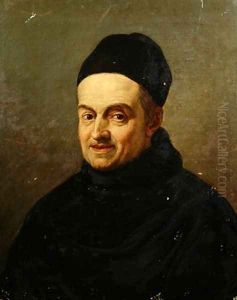Giovanni Battista Martini Paintings
Giovanni Battista Martini, also known as Padre Martini, was a notable Italian musician, composer, and music theorist who left a profound impact on the world of music during the 18th century. Born on April 24, 1706, in Bologna, Italy, he was immersed in music from a young age. His father, Antonio Maria Martini, was a violinist who provided his son with a comprehensive education in music.
Martini entered the Franciscan order at the age of 15 and was ordained a priest in 1729. Despite his religious commitments, he pursued his musical interests with zeal. He became a maestro di cappella at the Basilica of San Francesco in Bologna and was later appointed as the chapel master of the Basilica of San Petronio, where he served for the majority of his career.
A prolific composer, Martini wrote a wide range of music, including masses, oratorios, cantatas, and instrumental works. However, he is best remembered today for his contributions to music theory. His most significant work, 'Storia della Musica' (History of Music), remains a fundamental text for the study of the development of Western music.
As a teacher, Martini was highly regarded, and he mentored several prominent musicians of the era, including Wolfgang Amadeus Mozart, who visited him in 1770. Martini's influence extended beyond his students; his extensive correspondence with music scholars and composers across Europe made him a central figure in the intellectual music circles of his time.
Martini's music was characterized by its clarity, balance, and adherence to the principles of counterpoint, which he so eloquently discussed in his theoretical works. His contributions to music theory focused on the study of counterpoint and the history of music, and his texts were widely used by music students well into the 19th century.
Giovanni Battista Martini died on August 3, 1784, in Bologna. His legacy endures through his writings and the continued reverence for his scholarship in music history and theory. Martini's influence can also be seen in the works of his students and the many musicians who were shaped, directly or indirectly, by his pedagogical and theoretical contributions.
